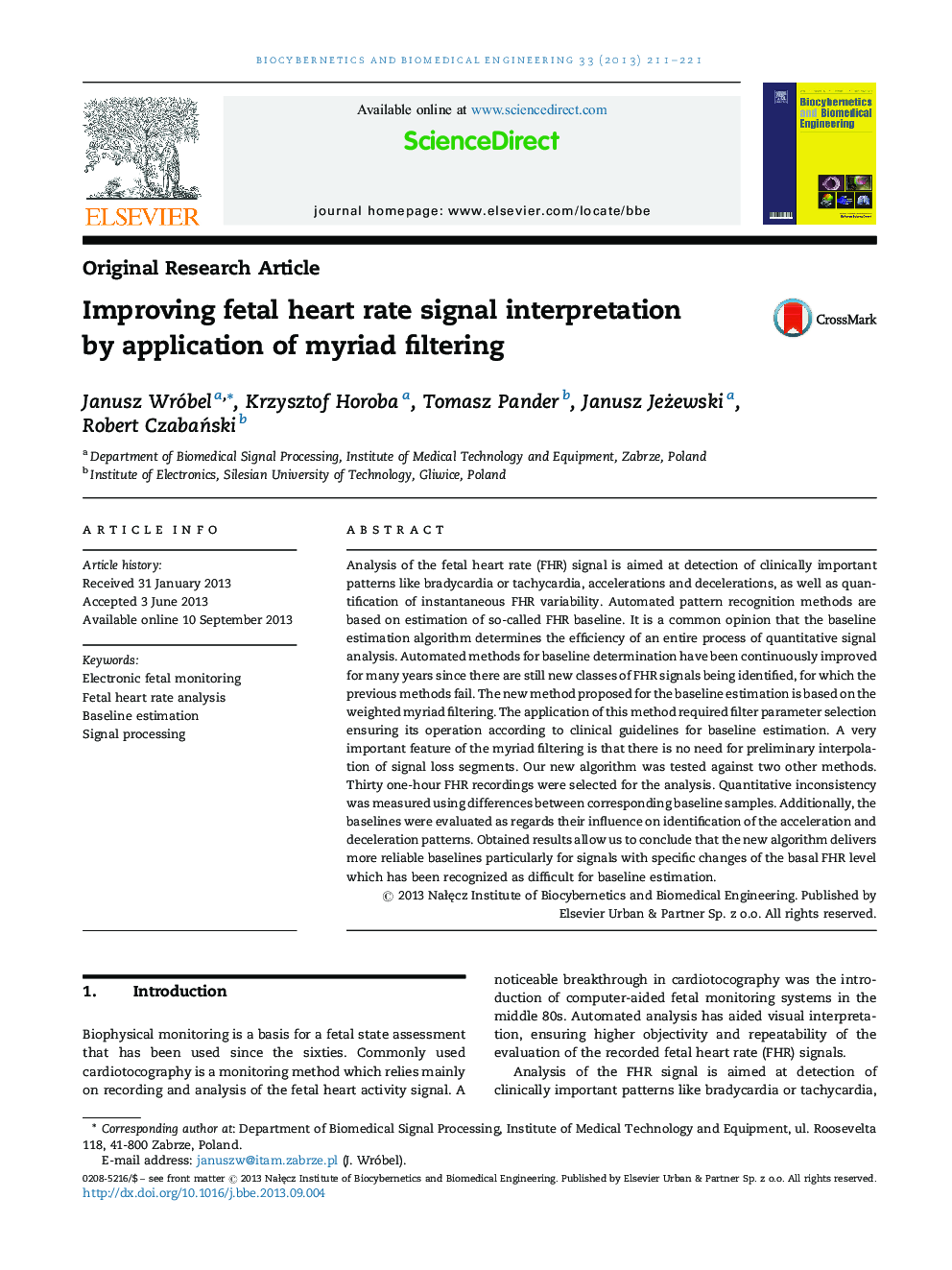| Article ID | Journal | Published Year | Pages | File Type |
|---|---|---|---|---|
| 5256 | Biocybernetics and Biomedical Engineering | 2013 | 11 Pages |
Analysis of the fetal heart rate (FHR) signal is aimed at detection of clinically important patterns like bradycardia or tachycardia, accelerations and decelerations, as well as quantification of instantaneous FHR variability. Automated pattern recognition methods are based on estimation of so-called FHR baseline. It is a common opinion that the baseline estimation algorithm determines the efficiency of an entire process of quantitative signal analysis. Automated methods for baseline determination have been continuously improved for many years since there are still new classes of FHR signals being identified, for which the previous methods fail. The new method proposed for the baseline estimation is based on the weighted myriad filtering. The application of this method required filter parameter selection ensuring its operation according to clinical guidelines for baseline estimation. A very important feature of the myriad filtering is that there is no need for preliminary interpolation of signal loss segments. Our new algorithm was tested against two other methods. Thirty one-hour FHR recordings were selected for the analysis. Quantitative inconsistency was measured using differences between corresponding baseline samples. Additionally, the baselines were evaluated as regards their influence on identification of the acceleration and deceleration patterns. Obtained results allow us to conclude that the new algorithm delivers more reliable baselines particularly for signals with specific changes of the basal FHR level which has been recognized as difficult for baseline estimation.
